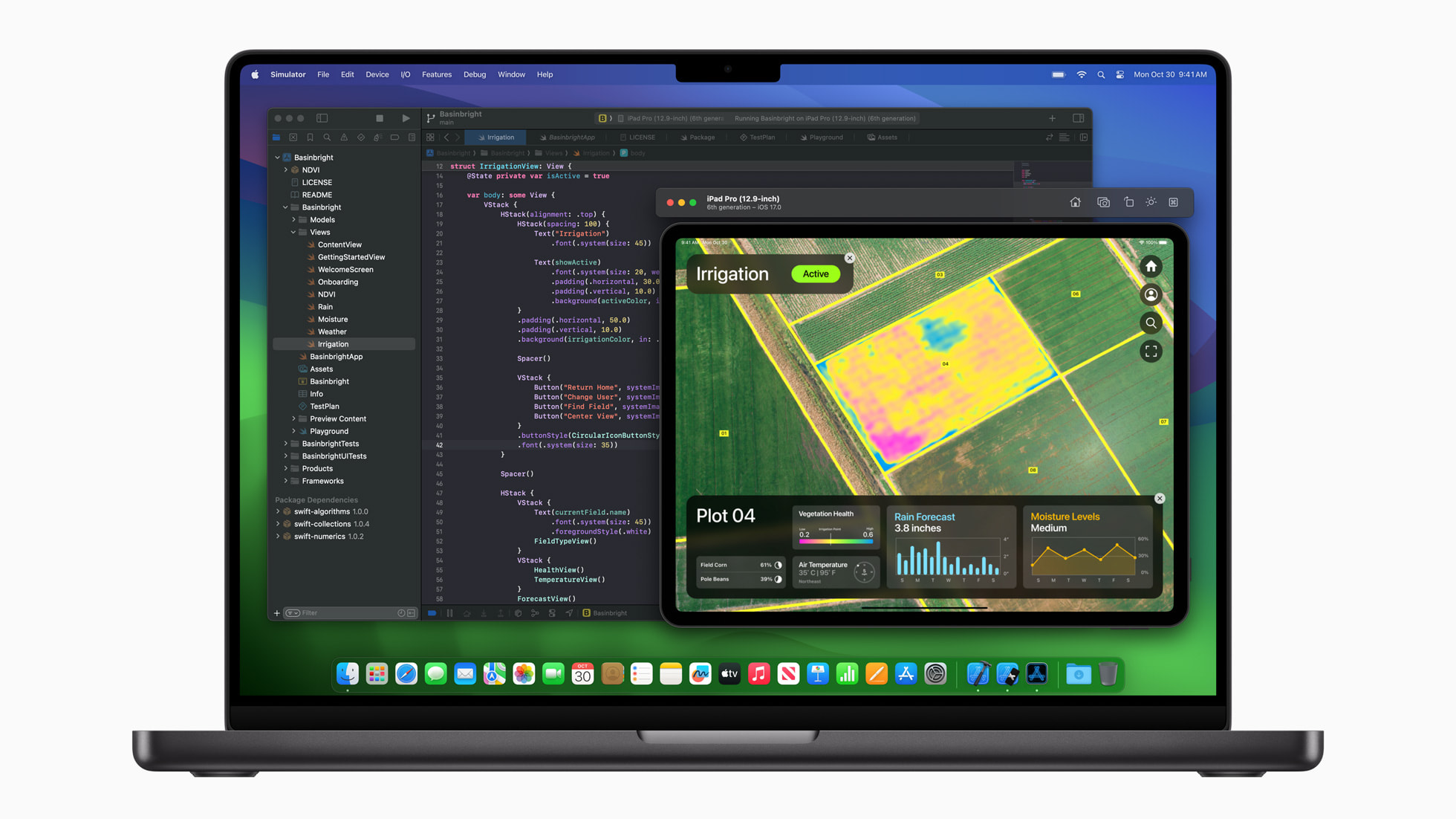Apple rolls out updated 14- and 16-inch MacBook Pro with new M3 chips

Apple recently unveiled its updated MacBook Pro models with new M3 chips during an event called Scary Fast. The newly introduced models include 14-inch and 16-inch MacBook Pro, which now come with a choice of M3, M3 Pro, or M3 Max chips, marking the first chips for a personal computer built using the 3-nanometer technology. The M3 chips are set to provide a substantial leap in graphics architecture, with features like Dynamic Caching and hardware-accelerated ray tracing and mesh shading, enhancing geometry processing and rendering more accurate shadows and reflections for a more realistic gaming experience.
The 14-inch MacBook Pro now starts at a price of $1,599 for the base model with the M3 chip, making it a more affordable option compared to its predecessor that was priced from $1,999 with the M2 Pro chip. The M3 Pro model still retains the price of $1,999. On the other hand, the starting price for the 16-inch MacBook Pro with the M3 Pro chip remains the same as its predecessor with the M2 Pro chip, priced at $2,499.

One notable aesthetic change is the introduction of a Space Black color option, exclusive to models featuring the M3 Pro processor or better, providing a matte dark gray finish that's less susceptible to fingerprint marks compared to the classic silver models.
The new MacBook Pro models also boast Liquid Retina XDR displays that can now display SDR content 20% brighter, with a peak brightness of 600 nits, up from the previous 500 nits. The graphic improvements are substantial with the M3 GPU being claimed to deliver 1.8 times faster performance than the M2 and 2.5 times faster performance than the M1 in professional applications, although the exact testing criteria were not disclosed.

The M3 chip lineup includes a range of configurations to cater to different user needs. The base M3 chip features an eight-core processor (four high-performance cores and four high-efficiency cores) and a ten-core GPU. The M3 Pro steps up with a 12-core processor (six high-performance cores, six high-efficiency) and an 18-core GPU, while the M3 Max houses a 16-core processor (12 high-performance cores and four high-efficiency), a 40-core GPU, and supports up to 128 GB RAM.
These chips are also notable for being the first to be crafted using a 3-nanometer process, in contrast to the 5-nanometer process used for the M1 and M2 chips. This increased transistor density contributes to better energy efficiency and overall performance. Apple claims that the performance cores in the M3 are 15% faster than those in the M2, and the energy-efficient cores are 30% faster.
Moreover, the Neural Engine in the M3 chips, responsible for handling AI tasks, is said to be 60% faster compared to the M1 chips. There's also a media engine with hardware acceleration for H.264, HEVC, ProRes (standard and RAW), which now also supports AV1 video decoding, making AV1 content viewing more energy-efficient.

The new MacBook Pro models with M3 chips are now available for pre-order, with the M3 and M3 Pro-based systems shipping from November 7, and the M3 Max-based models to be available a bit later.
The launch of the M3 chips and the updated MacBook Pro models is a significant step forward, offering better performance, energy efficiency, and new color options, meeting the demands of various users including professionals and gamers alike.
Main Features of new MacBook Pro:
New M3 Chips Options:
Base M3: 8-core CPU (4 high-performance, 4 high-efficiency) and 10-core GPU.
M3 Pro: 12-core CPU (6 high-performance, 6 high-efficiency) and 18-core GPU.
M3 Max: 16-core CPU (12 high-performance, 4 high-efficiency), 40-core GPU, and up to 128 GB RAM support.
3-Nanometer Process Technology:
Increased transistor density for better performance and energy efficiency.
Graphics Enhancements:
Hardware-accelerated ray tracing and mesh shading for realistic lighting and geometry processing.
Improved Display:
Liquid Retina XDR displays with 20% brighter SDR content display, peaking at 600 nits brightness.
Color Option:
New Space Black color, offering a matte dark gray finish that is less prone to fingerprint smudging.
Neural Engine:
60% faster performance in handling AI tasks compared to the M1 chips.
Media Engine:
Hardware acceleration for H.264, HEVC, ProRes (standard and RAW), and now supports AV1 video decoding.
Pricing:
14-inch base model with M3 chip starts at $1,599.
16-inch model with M3 Pro chip starts at $2,499.